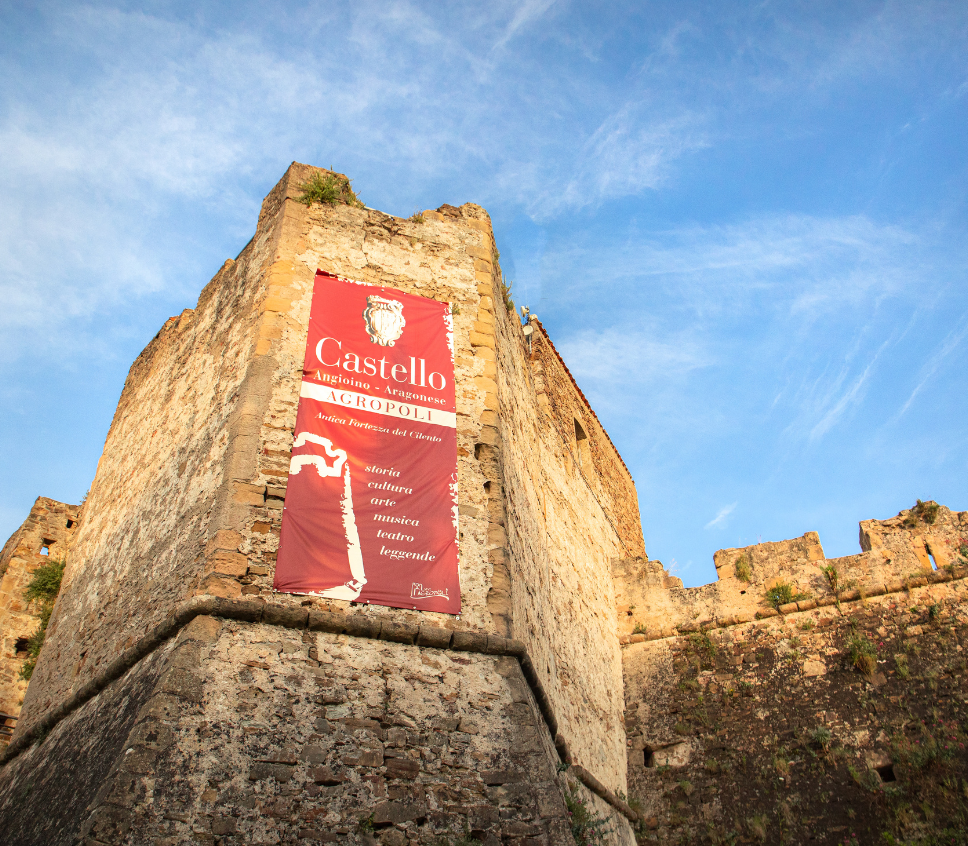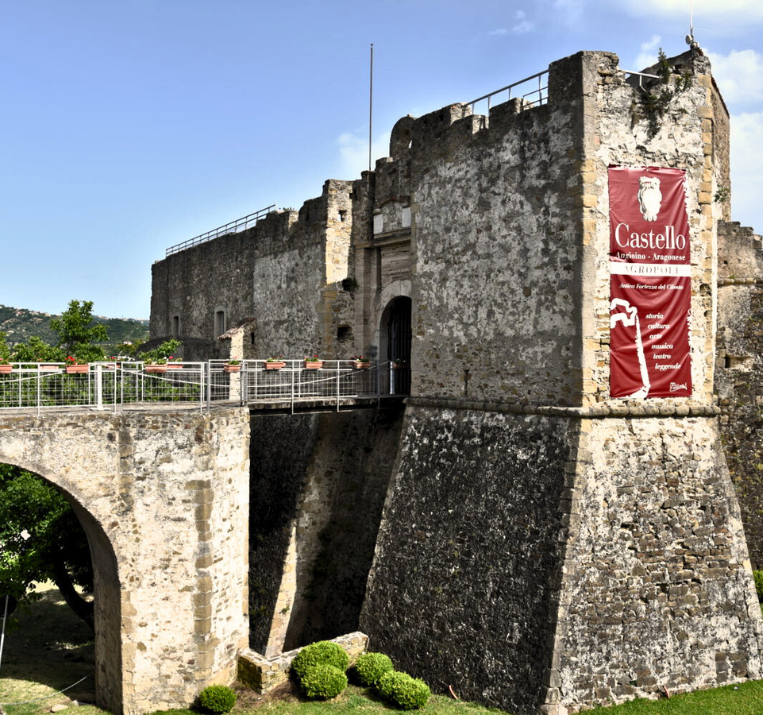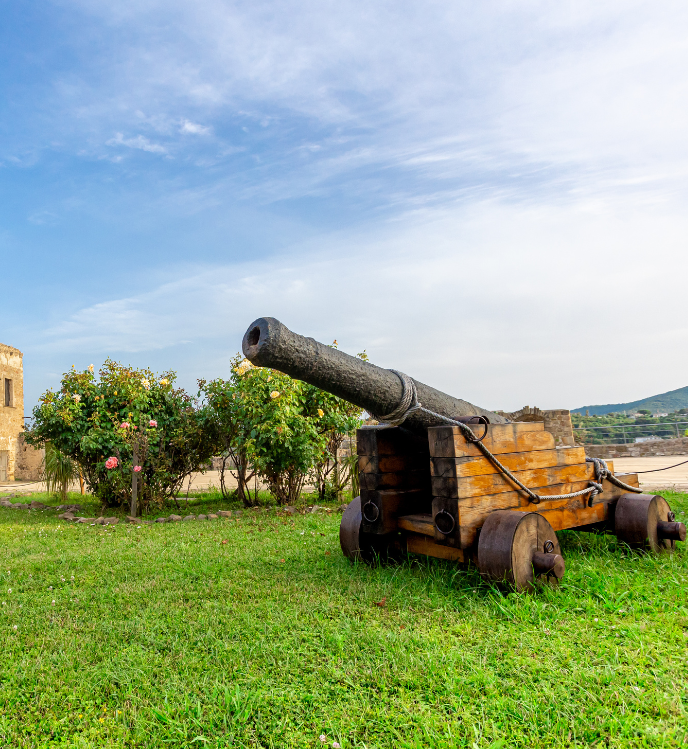CAR
Via SP175, E45 or A30, take the Battipaglia exit and follow SS18 Tirrena Inferiore, SS18var and SS267 towards Via del Castello/Via S.Del Vecchio in Agropoli
Via S.Del Vecchio, 84043 Agropoli SA

Via SP175, E45 or A30, take the Battipaglia exit and follow SS18 Tirrena Inferiore, SS18var and SS267 towards Via del Castello/Via S.Del Vecchio in Agropoli
Busitalia lines 34 and 99 and Autolinee Giuliano
Choose the line leading to the Agropoli-Castellabate stop, then continue on foot for approximately 20 minutes
The Angevin Aragonese Castle is one of the main attractions of the old town of Agropoli, located in the historic centre. Once a fortress and military garrison but also a noble residence, today the castle is a fascinating place to visit for its history and for the numerous events organised, such as the annual “Settembre Culturale” exposition.
The first construction of the castle dates back to the Byzantines, around the 6th century, who made Agropoli their stronghold and a dock for the fleet. During the 10th and 11th centuries, the Normans renovated the structure and began building the walls, which have remained unchanged and whose Norman-Swabian style can still be admired today.
The castle underwent several renovations, in particular by families close to the two dynasties that ruled Southern Italy, namely the Angevins and the Aragons. In the 15th century, Giovanni Sanseverino, Count of Marsico, feudatory of Alfonso V of Aragon, initiated a general renovation of the castle to its current appearance. A moat was built, the triangular-based building plan changed to a square base and the fortifications were reinforced.
Soon the castle lost its purely defensive function, to become in the viceroyal era and during the 18th century the main seat of great feudal families such as the Sanseverino, the Grimaldi of Eboli, the Caracciolo of Trentinara and the Sanfelice. In addition to being a noble residence, the castle also housed prison cells, the judge's office and the guard.




